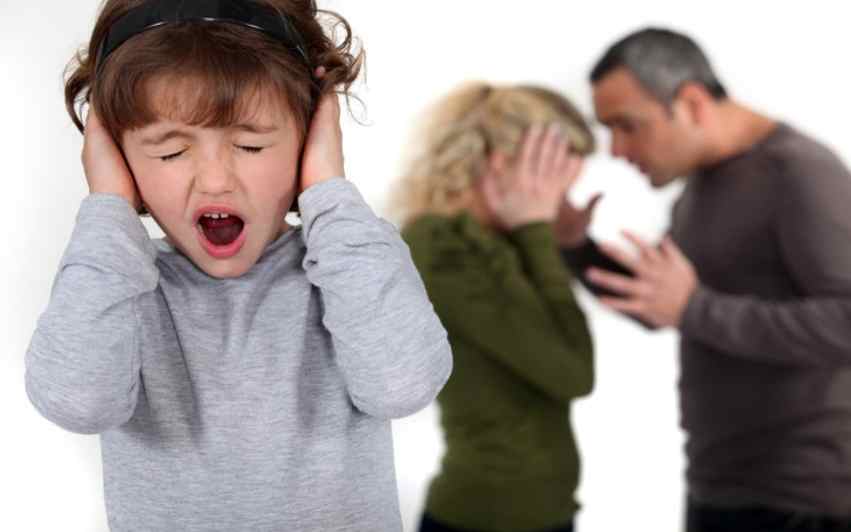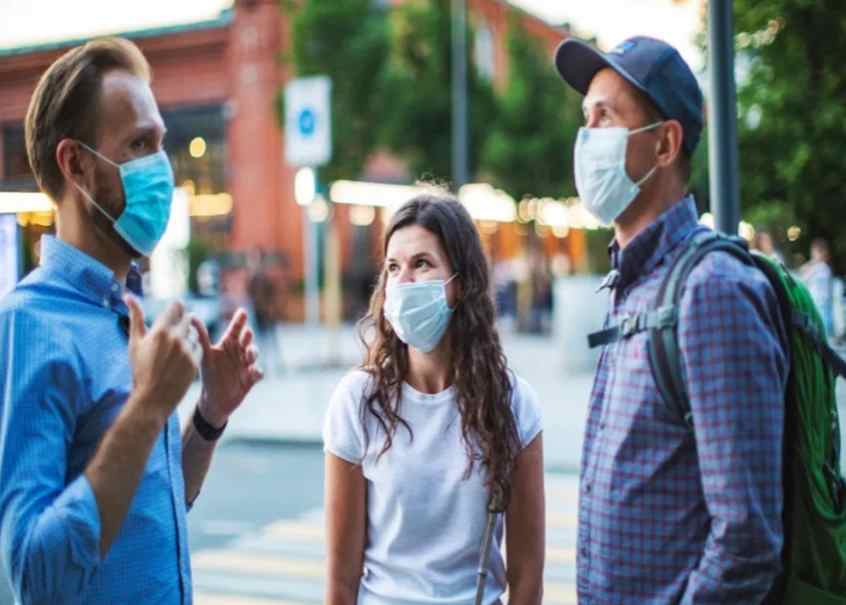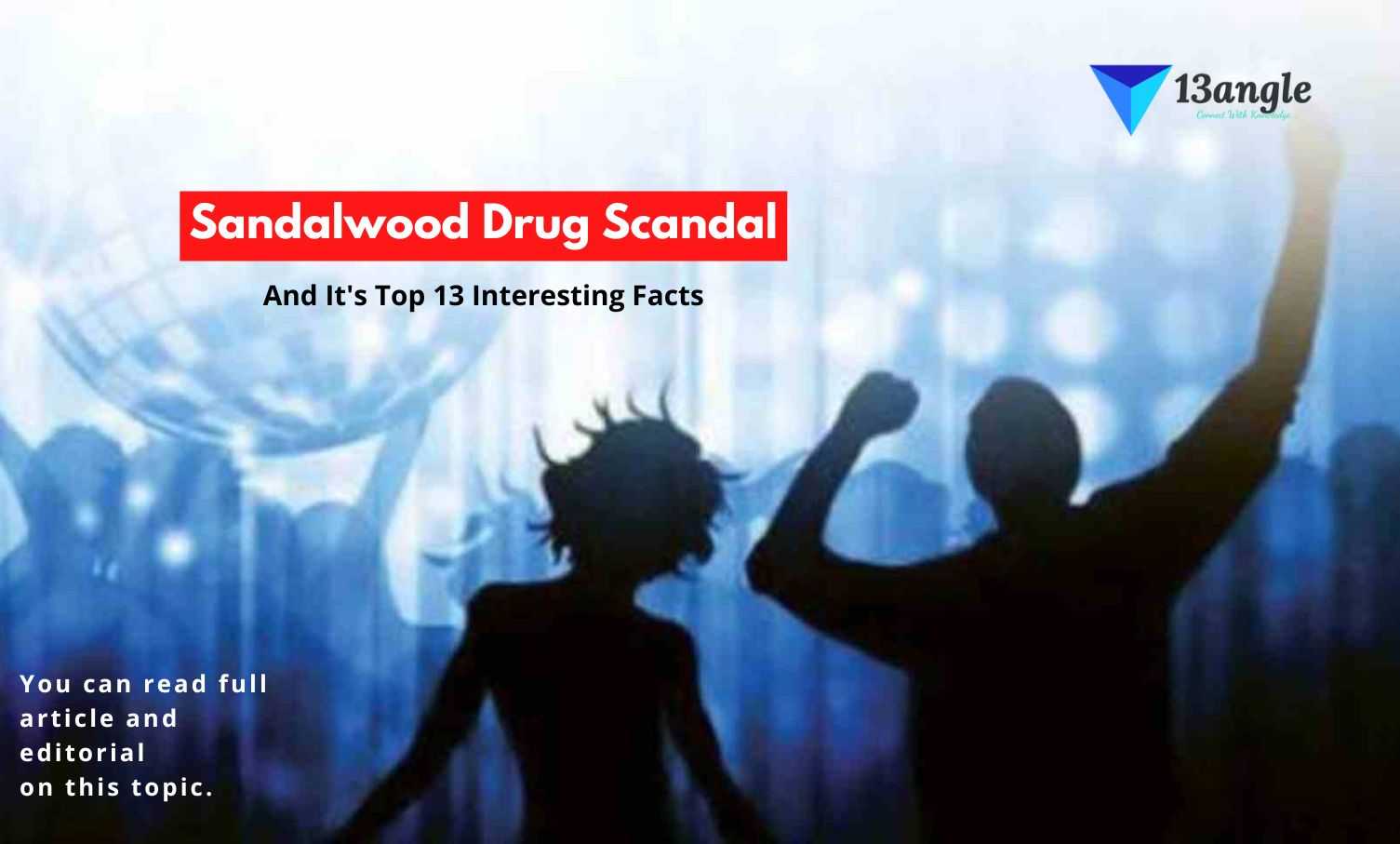
Full Name | Post-traumatic stress disorder(PTSD) |
Definition | PTSD is defined as an anxiety disorder that develops in reaction to physical injury or severe mental or emotional distress. |
Symptoms | Nightmares, Intrusive memories, Reliving the experience through flashbacks. Feeling “numb”. |
Types | Generally grouped into five types: Normal stress response, Comorbid PTSD, Acute stress disorder, Uncomplicated PTSD, and Complicated PTSD. |
Treatment | Treatment includes different types of psychotherapy as well as medications to manage symptoms. |
Specialist | -Clinical Psychologist Treats mental disorders primarily with talk therapy. -Psychiatrist Treats mental disorders primarily with medications.
|
Complications | Depression and anxiety, Issues with drugs or alcohol use, Eating disorders, Suicidal thoughts, and actions. |
Prevention | Some studies suggest that early intervention with people who had a trauma may reduce some of the symptoms of PTSD or prevent it altogether. |
Introduction
Post-traumatic stress disorder is a condition that is seen after a traumatic event.Say, a natural disaster, people who are veterans, who are retired from the military, are people who are seen to have PTSD to a great extent. And, there are girls who have been molested, sexually assaulted, children whose parents were killed in an accident, or any kind of natural calamity who experience PTSD although their life. So. PTSD is altogether different from stress. It is all about remembering that incident or a traumatic eventthat brings stress again and again, but it is that one moment that bought stress to you. It is associated with nightmares-people who experience PTSD wake up at night in a stressful way, breathing heavily, with an increased heartbeat and pre-occupation with thoughts.
Definition & Meaning
A disorder characterized by failure to recover after experiencing or witnessing a terrifying event. The condition may last months or years, with triggers that can bring back memories of the trauma accompanied by intense emotional and physical reactions. Now, the Diagnostic and Statistical Manual 5th edition of the DSM 5 categorizes PTSD as a “trauma-and-stressor-related disorder” that happens when the symptoms of an acute stress response persist for over a month.
PTSD stands for post-traumatic stress disorder and what it really is, is a failure to return to normal after a traumatic event, so something happens and then people don’t get back to their lives as they previously were, and of course, if something happens we’re humans we’re going to have an emotional response. What happens is when it’s prolonged and then after six months people are still struggling with then, we start diagnosis PTSD. So, the signs and symptoms of PTSD are highly variable and often misdiagnosed as other conditions. People can have trouble sleeping, high anxiety, depression, trouble experiencing positive emotions, and trouble in their relationships because they struggle with loving emotions with the people that they know, that they love. Even so far as having what we call perceptual distortions which other people call hallucinations. They can hear people whispering their names or see shadows out of the corner of their eyes and they’re afraid to say these things. Avoidance- doesn’t want to go to the places that remind them of what happened. They don’t want to be around people that look like what happened. So, commonly when we think of PTSD, our minds automatically go to war: soldiers. But more commonly in our communities, we see exposure to violence or having violent acts acted upon them on an individual level. Learning about it, we see medical trauma, we see sexual assaults, we see childhood trauma, community violence, and racial trauma.
Symptoms
The main symptoms are psychological ones, for example, someone might re-experience their trauma through nightmares, flashbacks, and intrusive thoughts, but these can lead to behavioral changes as well. Somebody might start to avoid environments and situations that remind them of their trauma and feel a sense of hypervigilance where they are constantly on guard or hyperarousal where they have this exaggerated startle response to the smallest of triggers. Not surprisingly, all of these thoughts and behaviors can lead to trouble sleeping and general irritability which can lead to angry outbursts. Interestingly, this pattern is different for young children who are less likely to show distress, but instead, they might use play to express their memories, sometimes acting out scenes that trouble them. Whether or not someone develops PTSD as a response to trauma is determined by a number of different factors. For example, it’s clear that interpersonal trauma, like rape or violent muggings, is more likely to result in PTSD than accidents or environmental disasters. In addition, people that go through extreme trauma as a child are likely to develop PTSD in response to other traumas faced in their adult life. Having said that, if someone manages to develop effective coping strategies for trauma including having a social support network, then that can help with future traumas as well. As far as causes go, there are some clues about biological factors related to the development of PTSD. For instance, people with dysfunctions of the hypothalamic-pituitary-adrenal axis, deficits in the arousal and sleep-regulating systems in the brain, and problems with the endogenous opioid system-which helps with pain control-have all been shown to be at higher risk for developing PTSD. PTSD has also been linked to having a family history of mood disorders or anxiety disorders. The precise mechanism, though, that ties all of these relationships together has yet to be worked out.
Intrusive thoughts: Intrusive thoughts are perhaps the best-known symptom of PTSD. What do intrusive thoughts look like? A person going about their day is suddenly confronted by unwelcome, distressing memories of what happened to them.
Nightmares: Trauma survivors regularly deal with nightmares. U.S Department of Veterans Affairs (the VA) had indicated that 71 percent to 96 percent of those with PTSD may have nightmares.
Memory Loss: Traumatic events impact the brain’s functioning. While many people assume that this is due to a physical brain injury, it’s frequently a case of the body attempting to cope with what has happened.
Negative thoughts about self and the world: People who have been through trauma see the world differently. They may feel hopeless and live with a ‘foreshortened future’ – an inability to visualize future milestones or old age.
Self-isolation: After something terrible happens, it’s difficult to connect with others. People with PTSD may have a hard time being around people for a few different reasons. These include potential triggers, as well as an inability to relate to their friends.
Anger and Irritability: PTSD creates a state of hyperarousal. This means that the brain is kicked into a state of ‘fight or flight’ at the slightest urging.
Hypervigilance: After a traumatic event, the body enters a state of hypervigilance. This increased alertness ensures that a person is always prepared for any other threats. However, this state of extreme awareness is exhausting and upsetting for trauma sufferers, making it among the most upsetting of the 17 symptoms of PTSD.
Insomnia: Insomnia is another typical symptom of PTSD. To go to bed, a person has to let their guard down, which is especially difficult for hypervigilant trauma sufferers. Additionally, the nightmares they may face at bedtime can make sleep an unattractive proposition.
Vivid Flashbacks: Flashbacks are different from intrusive thoughts. Those who have flashbacks may feel as though the traumatic event is happening all over again. Memories can become so vivid that they seem to be happening in the current moment. This can cause people to panic, resulting in a sudden, aggressive response.
Casting Blame: Self-blame is especially common after a traumatic event. People with PTSD may blame themselves for what happened, especially if it resulted in the injury or death of a loved one.
Treatment

PTSD can be treated in a variety of ways. We can do it through therapy, we can do it through medication. There are treatment models that match your need or your loved one’s need. Some people like individual therapy, and some people like group therapy. Some people don’t want to talk about all the bad things that happened or even can’t remember all of the bad things that happened and they think well what will therapy help me with, I don’t want to talk about this and I don’t even remember this there are models to match that, too. If you find yourself with an inability to cope with distancing yourself from your families you no longer enjoy the things that you used to enjoy, you’re having trouble sleeping, you’re having panic attacks, you’re just not okay, it’s time to reach out. The sooner you fix this, the sooner you’re back on your feet. This is treatable. This biggest takeaway concerning PTSD is to remember that it is highly individualized, highly variable and you’ve done nothing wrong so there’s no need to carry this burden. It’s somebody else’s.
5-Types Of PTSD
Normal stress response: The normal stress response occurs when adults experience one distinct event that disrupts their entire life. When they go through this specific type of Post-Traumatic Stress Disorder, many have a hard time locating their emotions and feel cut off from reality, making it hard for them to maintain and form relationships with others. According to Psych Central, this is a mild type of PTSD, and people who experience it can usually recover within a few weeks.
Comorbid PTSD: According to Psych central, when someone has comorbid PTSD they’re also commonly diagnosed with another psychiatric disorder, such as depression, alcohol or substance abuse, panic disorder, or other anxiety disorders. Dr. Peter Tuerk, an Associate Professor of Psychiatry and Behavioral Sciences at the Medical University of South Carolina dates ”PTSD has always overlapped with depression and vice versa.” This is why war veterans often experience comorbid PTSD when they’re fighting off more than just trauma. It’s a hellish nightmare ingrained in both their bodies and brains when they may have been restored to unhealthy sources, such as drugs and alcohol to try to forget the frightening exposures they’ve seen and experienced. They may also live with guilt, knowing that they’ve hurt someone in combat, which can influence them to go into self-destruction mode, believing they deserve the pain they inflict upon themselves. It’s important to note that when treating this type of PTSD, it’s most effective when it’s treated with the other psychiatric disorder together, rather than in a linear, before-and-after fashion.
Acute stress disorder: When someone has this type of PTSD, they may forget things unnaturally and frequently, which can disrupt their everyday activities, including work, sleep, and hygiene habits. This type of PTSD is the least common out of all the 5 types. This disorder may be triggered when someone experiences a heavy burden suddenly, such as losing a closed one too soon or experiencing a natural disaster where they lose their home to a hurricane, earthquake, or tornado. When seeking acute stress disorder, one option includes removing yourself from the event that’s triggering it.
Uncomplicated PTSD: Uncomplicated PTSD is actually more complicated than it sounds. This type of PTSD causes the individual to experience a traumatic event over and over again, which may discourage them to come into contact with similar situations associated with it. For instance, rape victims may experience this type of PTSD when they avoid people of the opposite sex or avoid relationship building and intimate acts altogether. When seeking treatment for uncomplicated PTSD. The individual should look into talk therapy with a psychologist and take the proper medication prescribed to them.
Complex PTSD: Complex PTSD, otherwise known as Disorder of Extreme Stress, occurs in individuals who have experienced traumatic events for an extended period of time. Examples of this include, childhood abuse-whether it’s verbal, physical, and/or sexual.
PTSD And Children

If your spouse is affected with PTSD and is in treatment, how do you have that conversation with your kids? -That can be really difficult because, in some cases, the child is traumatized. We talked about how one of the symptoms of PTSD is that hyperarousal, that irritability, that reactivity. And sometimes that can be very scary for children. They will hear yelling and screaming and they don’t understand or the parent can really believe that they’re dying and behave as if, I’m going to die or say that. And that’s traumatizing for that kid. They may think my dad, my mom, they’re going to die. And remember, you don’t have to necessarily experience life-threatening situations yourself. If you truly believe that someone that you know or someone close to you, is going to die, that itself can be considered one of the triggers for PTSD. So, in some, cases you’re treating the whole family.
Covid Took A Turn For PTSD

Covid exposed them to trauma directly. A lot of healthcare workers were exposed to this type of trauma that they dealt with in the past but now it was at such an extreme level that they started to struggle to deal with it. People that already had PTSD saw an emergence of symptoms, a return of symptoms, and a worsening of symptoms. Their fears were verified. The world is a dangerous place. We all might be in trouble. Maybe I might get sick. Maybe I might get hurt. What was also explained by a patient, was that masks are more troublesome because people that have trauma don’t like looking at people in the eyes, oftentimes the aggressors used that look at me in the eyes and now you have a mask on there is nothing left but to look in someone’s eyes and so it’s traumatizing. Also, you cannot easily identify people with a mask on, so worrying where your brain can quickly switch from that’s not someone that hurt me in the past to now are we sure that’s not someone that hurt me in the past because half of their face is covered. It’s not so easy anymore.
How Should You Treat People Who Have PTSD?

Encourage them to reach out for help. Remind them how important they are to you and how much you want them back in your life as the best person that they can be and there is help. Be gentle. Be supportive. Don’t judge. It’s not a morality issue. They aren’t acting in a certain way because they’re bad people, they’re acting in a certain way because that’s what’s helped them survive bad things and so if we can get people fully restored, people will have much more loving relationships and be more present in them.
Hearing about the trauma that led to your loved one’s PTSD may be painful for you and even cause you to relive difficult events. You may find yourself avoiding his or her attempts to talk about the trauma or feeling hopeless that your loved one will get better. At the same time, you may feel guilty that you can’t fix your loved one or hurry up the process of healing.
Some Basic Questions To Ask Your Doctor Or Mental Health Professional May Include:
- What do you believe is causing my symptoms?
- Are there any other possible causes?
- How will you determine my diagnosis?
- Is my condition likely temporary or long-term?
- What treatments do you recommend for this disorder?
- I have other health problems. How best can I manage these together with PTSD?
- How soon do you expect my symptoms to improve?
- Does PTSD increase my risk of other mental health problems?
- Do you recommend any changes at home, work, or school to encourage recovery?
- Would it help my recovery to tell my teachers or co-workers about my diagnosis?
- Are there any printed materials on PTSD that I can have? What websites do you recommend?
Top 13 Interesting Facts About PTSD
PTSD’s full name is post-traumatic stress disorder(PTSD).
It is a disorder characterized by failure to recover after experiencing or witnessing a terrifying event.
The condition may last months or years, with triggers that can bring back memories of the trauma accompanied by intense emotional and physical reactions.
Symptoms may include nightmares or flashbacks, avoidance of situations that bring back the trauma, heightened reactivity to stimuli, anxiety, or depressed mood.
Treatment includes different types of psychotherapy as well as medications to manage symptoms.
Examples of events that can trigger post-traumatic stress disorder (PTSD) include wars, crimes, fires, accidents, the death of a loved one, or abuse of some form. Thoughts and memories recur even though the danger has passed.
PTSD does not always last forever, even without treatment. Sometimes the effects of PTSD will go away after a few months. Sometimes they may last for years – or longer. Most people who have PTSD will slowly get better, but many people will have problems that do not go away.
Some studies suggest that early intervention with people who had a trauma may reduce some of the symptoms of PTSD or prevent it altogether.
PTSD can develop at any age, including childhood. Women are more likely to develop PTSD than men. This may be due to the fact that women are more likely to be victims of domestic violence, abuse, and rape.
PTSD in teens often manifests as aggressive or irritable behavior. Teens may engage in activities with a higher potential for negatively affecting their lives like drug or alcohol use to cope. They may also be reluctant to talk about their feelings.
Some people with PTSD turn to drugs and alcohol to cope with their symptoms. While these methods may temporarily relieve negative feelings, they don’t treat the underlying cause. They can even worsen some symptoms.
According to the National Center for PTSD, about 15 million U.S. adults have PTSD in any given year.
If you have frequent upsetting thoughts, are unable to manage your actions, or fear that you might hurt yourself or others, seek help right away. See your healthcare professional or a mental health professional immediately or call the National Suicide Prevention Lifeline at 800-273-8255.





